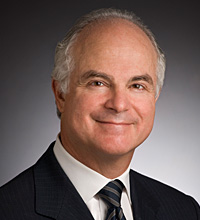This week The Practitioner presents Ivan Lansberg’s précis of the article “Family Firm Succession From a Social Exchange Perspective” from the March issue of Family Business Review. Ivan captures the authors’ review of the research about why family enterprises are such fertile ground for examining social exchange theory.
Click on the links below to read the other précis for the March FBR articles.
- Empirics in Family Business Research: Progress, Challenges, and the Path Ahead (Nava Michael-Tsabari)
- Viewing Family Firm Behavior and Governance Through the Lens of Agency and Stewardship Theories (Navneet Bhatnagar)
- Entrepreneurial Exploration and Exploitation in Family Business: A Systematic Review and Future Directions (Fank Hoy)
- Philanthropy in Family Enterprises: A review of the literature (Maya Prabhu)
(Authors: Joshua J. Daspit, Daniel T. Holt, James J. Chrisman and Rebecca G. Long)
Research Applied précis prepared by Ivan Lansberg of Northwestern University’s Kellogg School of Management and Lansberg Gersick & Associates
Imagine that you’re getting a birthday gift for your spouse. You walk into the store at an exotic destination, you look around and find the perfect item: the beautiful leather bag she always wanted. You approach the salesperson and inquire about the price. You then try to negotiate it down some and to see whether you can extract a few peripheral extras that may maximize the value of your purchase. Once you reach an agreement, you pay. You then let the salesperson know that the bag is a gift and request for it to be appropriately prepared. The salesperson happily complies, takes off the price tag and proceeds to wrap the bag with colorful paper precisely to eliminate any trace of the preceding economic transaction. The interesting question is: Why go through this rather bizarre ritual at all? Social scientists from a wide array of disciplines, including, sociology, social psychology, anthropology and economics, have long been interested in the psychological and social function underlying how information, opportunities, goods and services flow in human groups and organizations. This interest gave rise to an array of fascinating ideas, hypotheses and empirical studies loosely known as “social exchange theory.”
According to the theory, social exchanges can be categorized as either “restricted” meaning, “tit-for-tat” types of economic transactions guided by market rationality, short term efficiency and maximization – as in the instance when you purchased the bag at the store; or, as “generalized” meaning, non-market driven transactions in which the fundamental motivation is nurturing closeness and long term trust with the other and where accounting of the precise value of a gift, score keeping and immediate reciprocity are, in fact, discouraged – as when you give the gift to your spouse. According to the theory, each type of exchange has a particular mindset that goes with it. So much so, in fact, that we tend to “isolate” each type of exchange in a specific institutional context where the mode of transaction is most functionally relevant – the store for acquiring the gift; the birthday party back at home where you give the gift. Of course, most human affairs have mixed motives and exist somewhere in what is a continuum between pure “market driven” exchanges and more “communal” ones. And that’s precisely why family enterprises are such fertile ground for examining social exchange theory.
In these systems, the mindset and exchange rituals associated with market rationality so needed for a viable enterprise must coexist with fundamental familial values like inclusion, forbearance and forgiveness. If the proposition of a family enterprise is ever to be realized in a sustainable manner, striking an optimal balance between these two mindsets and modes of social exchange is essential for trust to flourish among all key stakeholders in family enterprise.
In this article, the authors provide us with a useful map of the vast literature on family enterprise succession using the vantage point of social exchange theory.
The coordinates they establish to segment the territory of published empirical studies on succession breakdown into a 3×3 matrix (see Table 1). Along the horizontal axis of their matrix, the authors rely on a temporal segmentation of the succession process into three distinct phases offered by Le Breton-Miller et.al. (2004): Phase 1: “establishing ground rules and first steps”; Phase 2: “nurturing and developing the successor” and, Phase 3: “handoff, transition and installation.” The vertical axis of the matrix demarcates exchanges that occur in the context of three key succession relationships. The first of these relationships is between incumbent leaders and their successors; the second depicts exchanges within the family and, the third exchanges across the family boundary meaning, exchanges between family members and non-family stakeholders (like non-family executives).
Into the body of the matrix the authors pour the existing literature allowing us to identify well-trodden areas as well as the virgin territories that remain unexplored. The results are quite revealing. For example, it turns out that most of the empirical research done to this date focuses on the antecedents of succession (Phase 1) and “generalized” exchanges within the family and between incumbent leaders and their successors. At the other extreme, the matrix reveals a dearth of research on restricted exchanges with stakeholders across the family boundary for Phases 2 and 3. The fact that exchanges with non-family stakeholders at these critical phases of the transition have been mostly neglected by researchers is somewhat surprising. After all, independent directors and non-family executives are often invaluable sources of critical information; impartial judgment and can play a critical role in mentoring and establishing the credibility of new leaders during Phase 2. In addition, how successors fair once in the leadership role (Phase 3) is frequently determined by how much authority non-family stakeholders are willing to vest in them.
How the succession process balances the “generalized” exchanges associated with the grooming, development of successors, the transfer of family values and the sense of legacy so essential for continuity with “restricted” exchanges associated with more rigorous succession plans which demand merit based selection criteria, a proven track record of performance and accountability is, of course, the holy grail pursued by many succession researchers. For example, in depicting studies that focus on the incumbent’s perspective, the authors posit that they are more willing to involve successors who have the necessary human capital (meaning, that have earned the respect and credibility necessary to succeed as senior leaders). In other words incumbents approach succession more in terms of a restrictive exchange emphasizing market driven organizational rationality. In contrast, the authors find that studies that focus on the successor’s point of view, suggest that their willingness to take over the business as well as their integrity and long-term commitment to the company are the most critical attributes, suggesting that successors approach the relationship much more as a generalized exchange. And so the authors proceed to fill out all the cells in their matrix calling our attention to how exchange relationships affect the succession process at each stage of the transition.
Beyond offering us a GPS to guide us through the morass of research on succession, one of the most useful parts of this article is a table laying out some fundamental questions that fit each cell in their matrix and that could point the way for future research (see Table 3). The questions are also extremely useful to practitioners and business owners. Consider for example:
- What are the best predictors of future successor success?
- When will relational factors outweigh objective qualification in selecting a successor?
- What is the optimal balance of incumbent and family influence in selecting a successor?
- What mechanisms can be employed by the family firm to extract the full value of nonfamily knowledge resources while reducing the risk of exposing the family firm to opportunism?
- If an incumbent is unwilling to engage in developing a successor (e.g. resists the need to transfer power) what are suitable alternatives to gain valuable tacit knowledge? (Typically transferred through generalized exchanges)
- How can generalized exchanges be created among family and nonfamily managers during and after the transfer of power from incumbent to successor?
While the article is certainly a stimulating and useful read, a cautionary word might be in order for the lay reader: plowing through the dense and jargon rich text will require some heavy lifting and test the power of your attention. Still, the effort will be well worth the yield of both “generalized” and “restricted” rewards.
References
Le Breton-Miller, I., Miller, D., & Steier, L. P. (2004) Toward an integrative model of FOB succession. Entrepreneurship Theory and Practice, 28, 305-328.
About the contributor
 Ivan Lansberg is a founder of Lansberg, Gersick & Associates, LLC and is on the faculty of the Kellogg School of Management at Northwestern University. He is a founder of FFI, an FFI Fellow and the recipient of the 1995 Richard Beckhard Award. Ivan can be reached at lansberg@lgassoc.com.
Ivan Lansberg is a founder of Lansberg, Gersick & Associates, LLC and is on the faculty of the Kellogg School of Management at Northwestern University. He is a founder of FFI, an FFI Fellow and the recipient of the 1995 Richard Beckhard Award. Ivan can be reached at lansberg@lgassoc.com.





